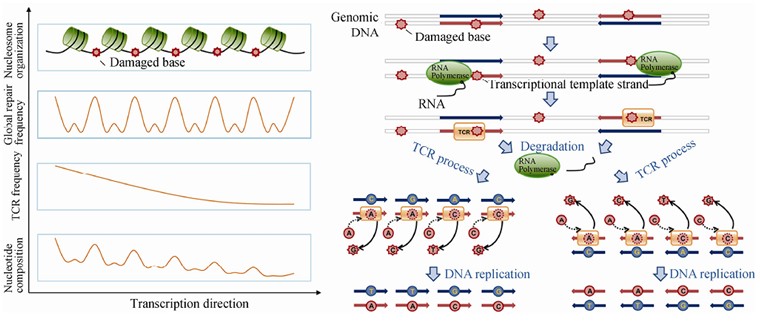As we all start to appreciate, genetic mutations in human genomes may lead to diseases. Therefore, it is critical to understand how genetic variations arise and what these disease-causing mutations are. Prof. YU Jun at Beijing Institute of Genomics (BIG), Chinese Academy of Sciences (CAS) recently published the work of their team on this topic in Genomics, Proteomics & Bioinformatics (GPB). Dr. CUI Peng et al provided novel insights into the very basic set of laws of genetic mutations in the human genome. They investigated the transcript-centric genetic variations in human genomes through analyzing data from both high-throughput RNA-sequencing in ten different tissues and single nucleotide polymorphisms in human populations. In their study, gene mutation rates were significantly and positively correlated with their expression level. This suggests that mutations may not occur randomly, but rather tend to accumulate more in genes that are expressed more frequently or at higher levels. Furthermore, they examined the frequency of 12 nucleotide mutations and found that C→T, A→G, C→G, and G→T mutations are the four major types of transcript-centric mutations in human genomes. Interestingly, they also identified a negative gradient of the sequence variations aligning from the 5' to 3' end of the transcription units (TUs), and the intensity of this gradient was correlated to gene expression levels. This phenomenon may be associated with the molecular process of transcription-coupled DNA repair (TCR) (the 5' end of TUs was more frequently repaired than the 3' end). Lastly, they presented the periodicity of genetic variations in human genome, which is supposed to be the consequence of both nucleosome phasing and TCR. Prof. YU and his colleagues characterized transcript-centric mutations in human genomes, which could be considered as one of the major driving forces for gene and genome evolution. They have just opened a “Pandora’s Box” of human genetic mutations. Schematic illustration for the proposed mechanism of TCR-associated mutations and sequence variation-defined periodicity (Image by CUI Peng et al). Paper Link: http://www.sciencedirect.com/science/article/pii/S1672022911600296 Contact: Prof. YU Jun Email:junyu@big.ac.cn
